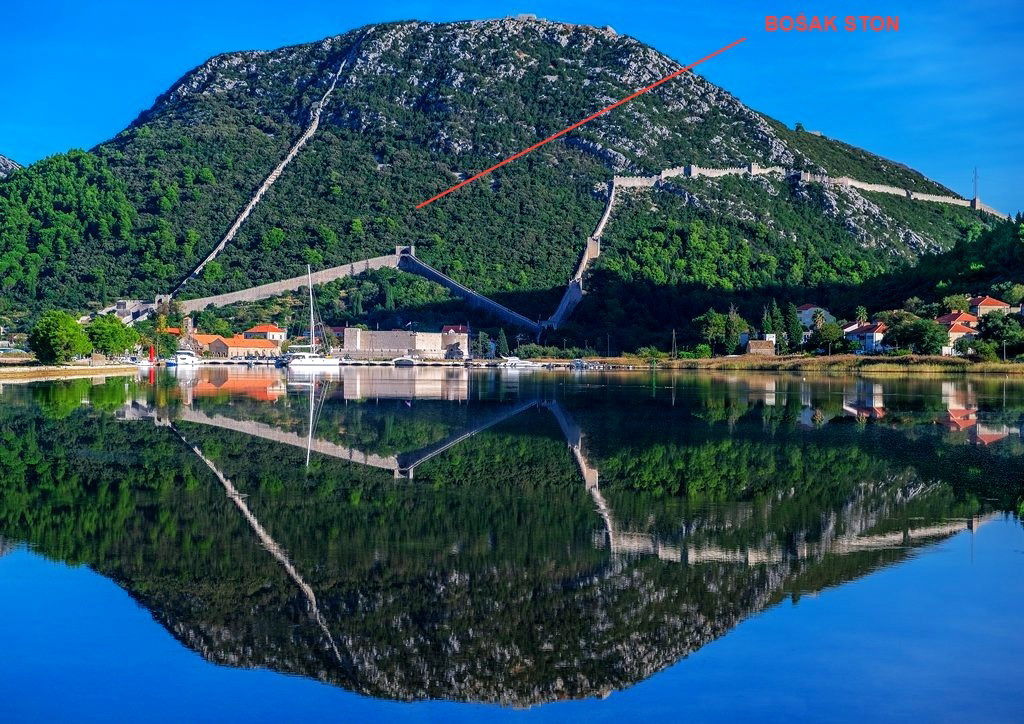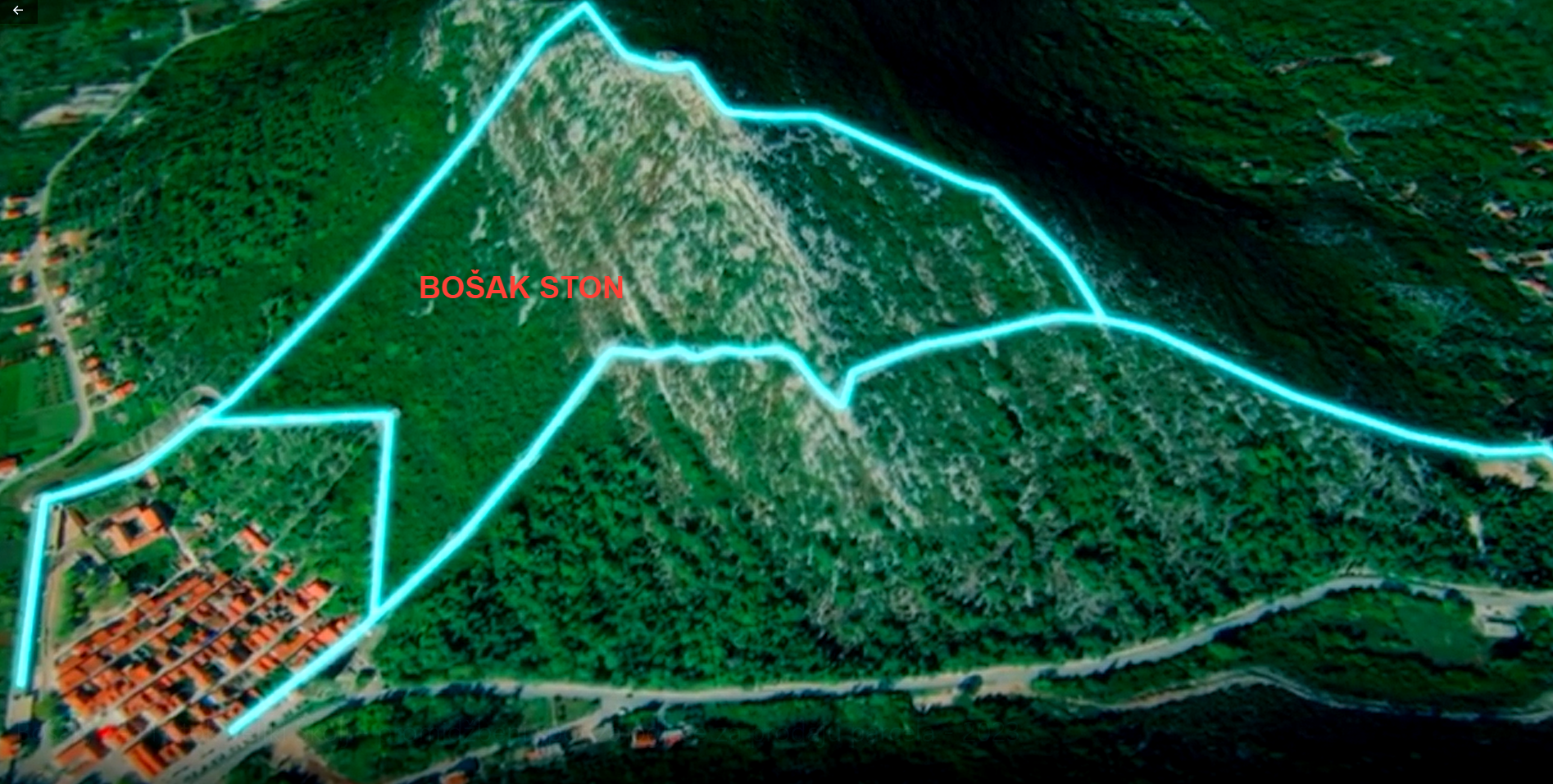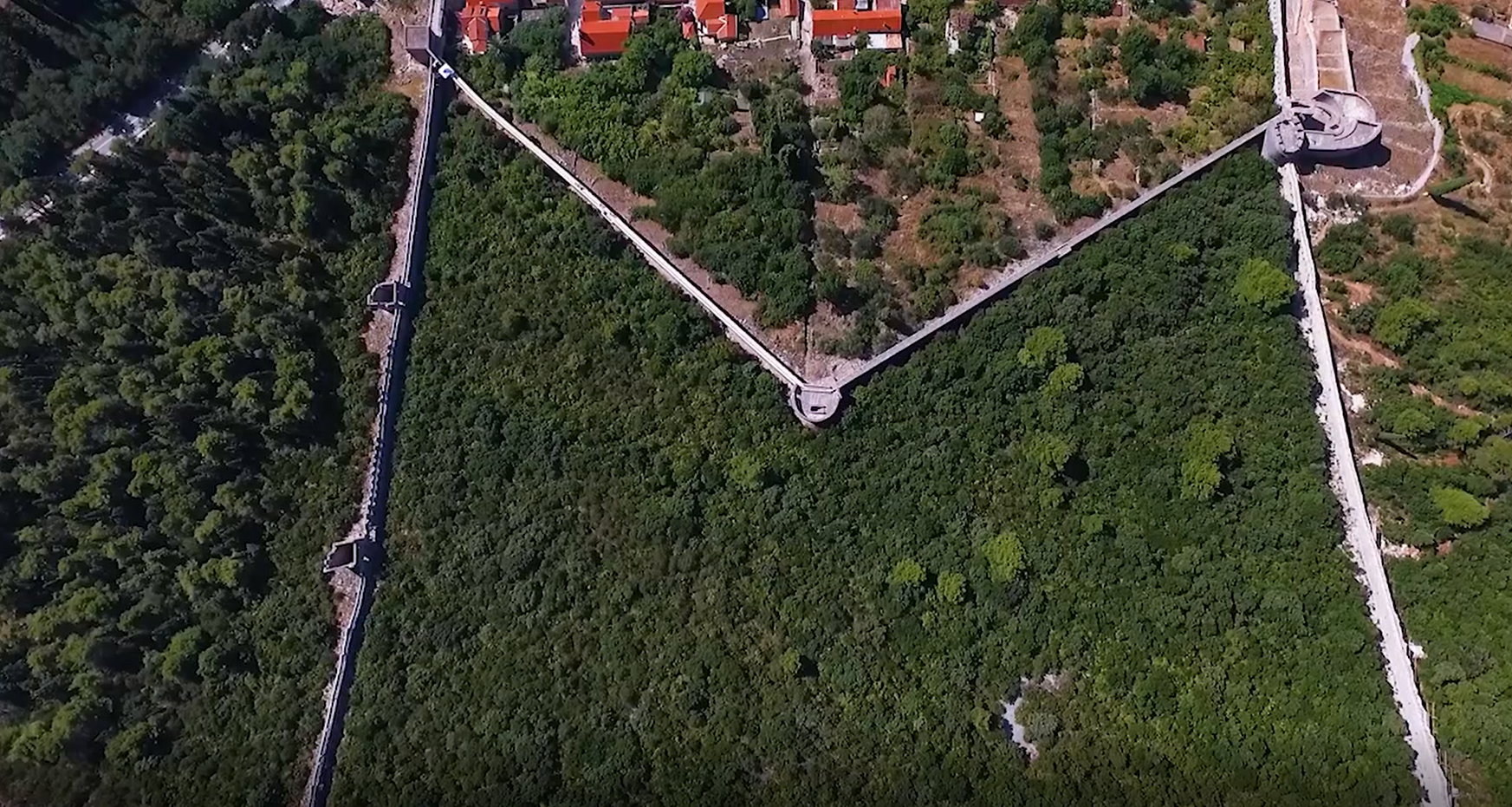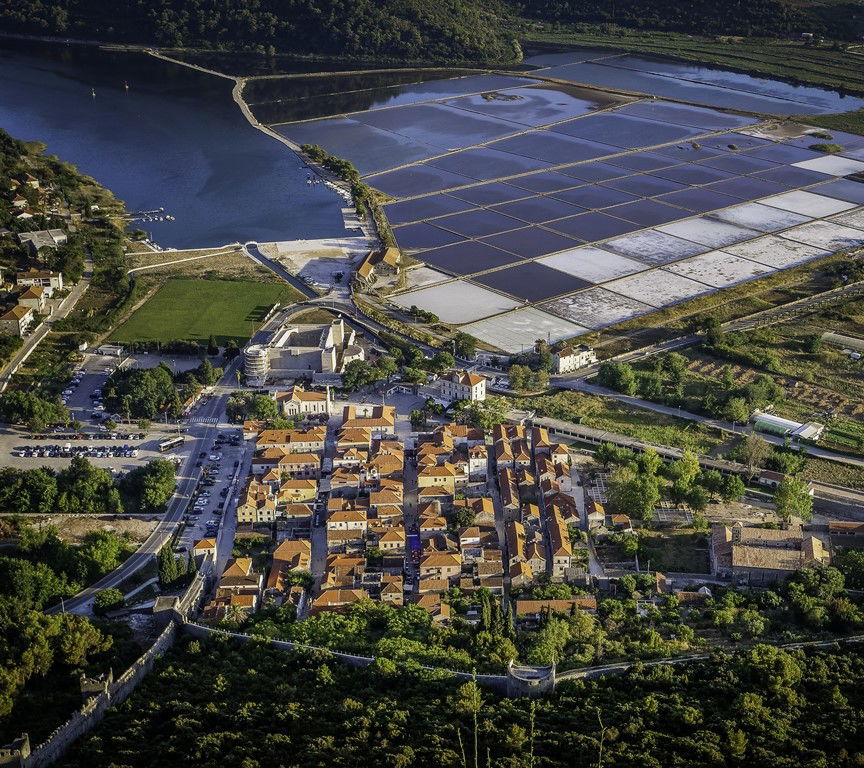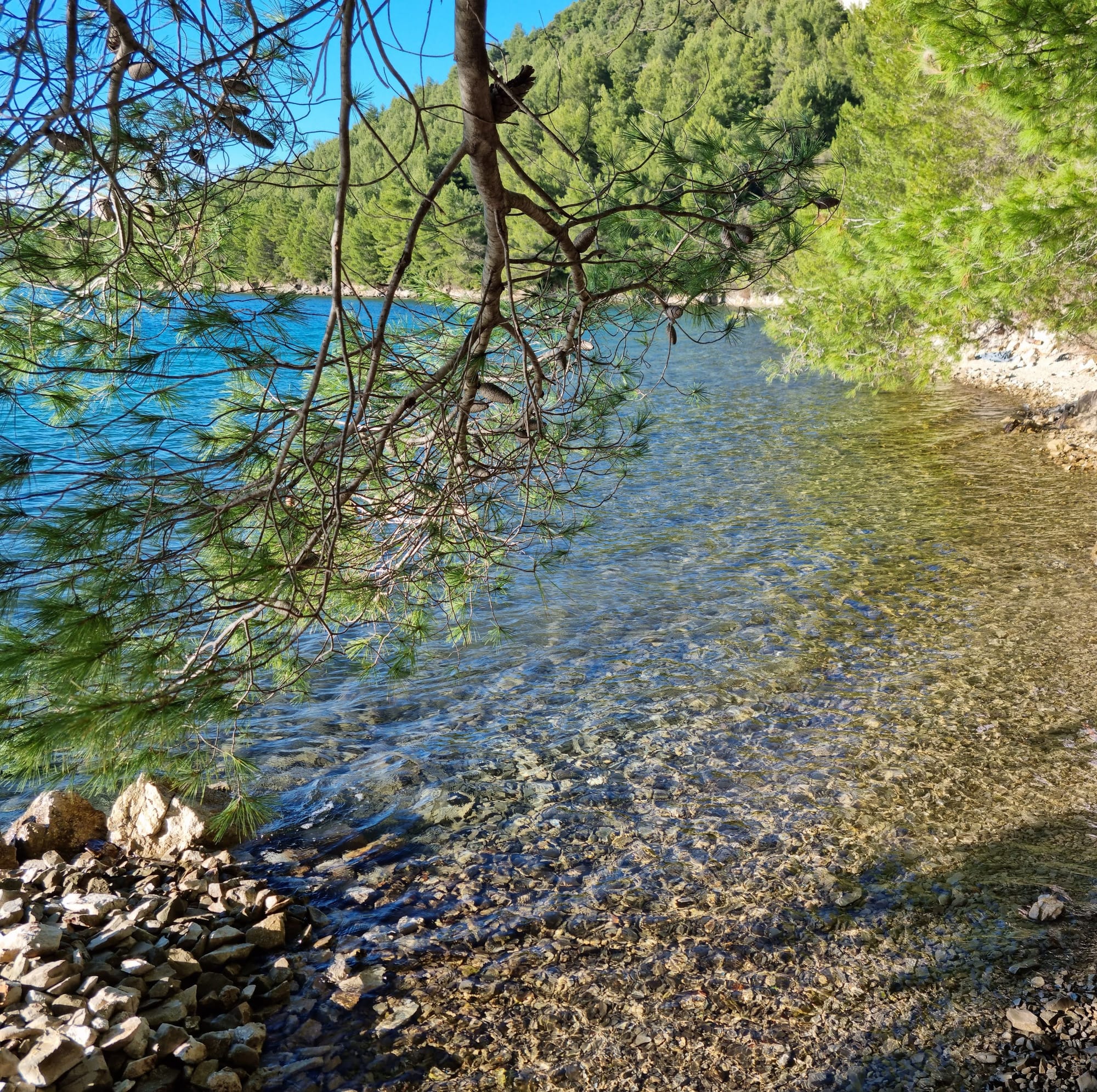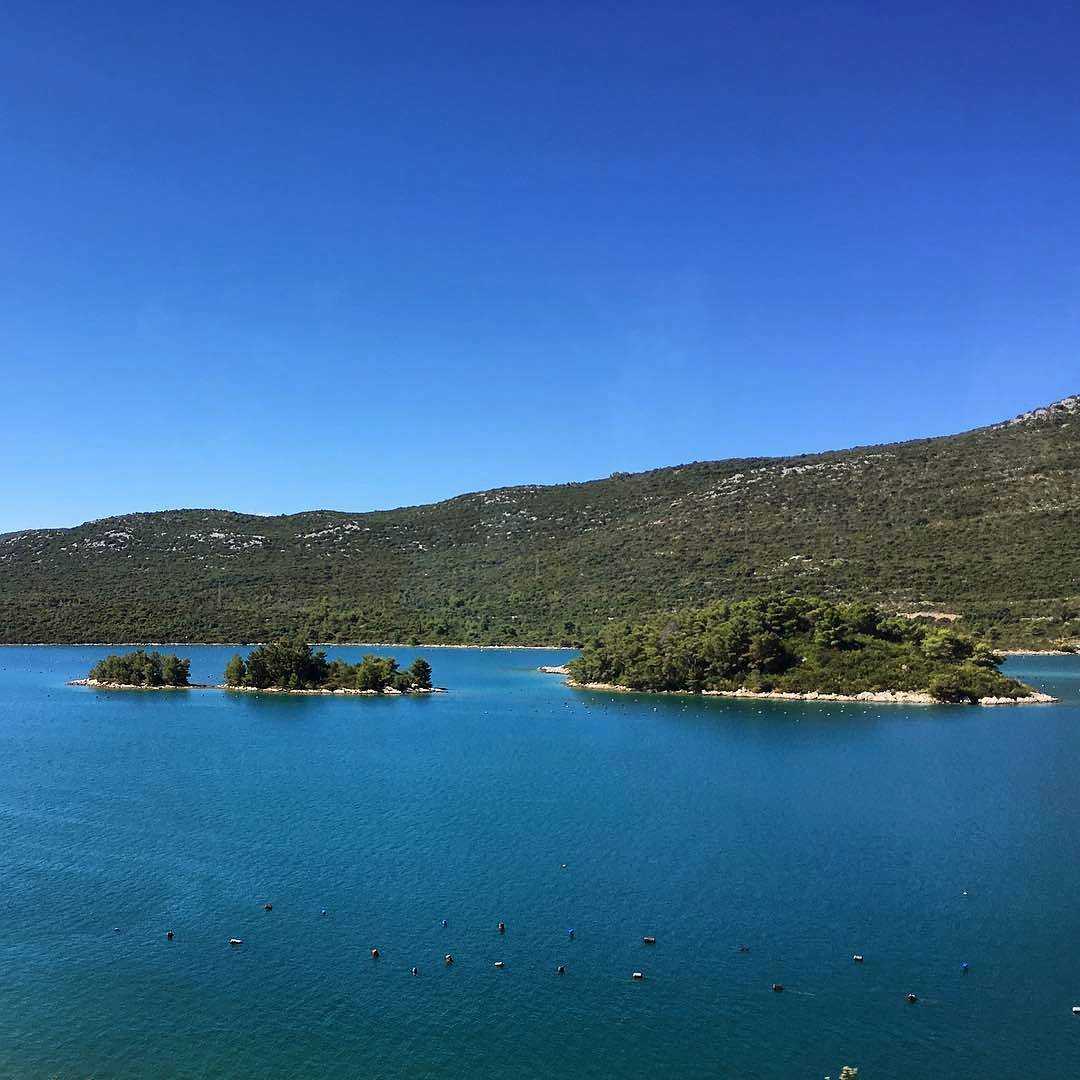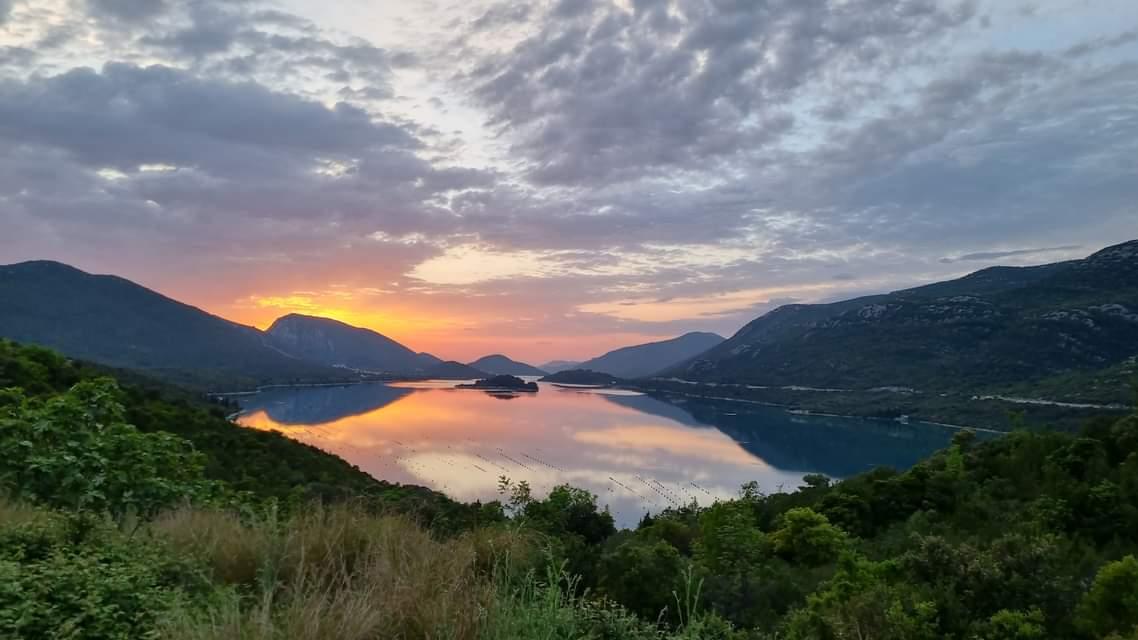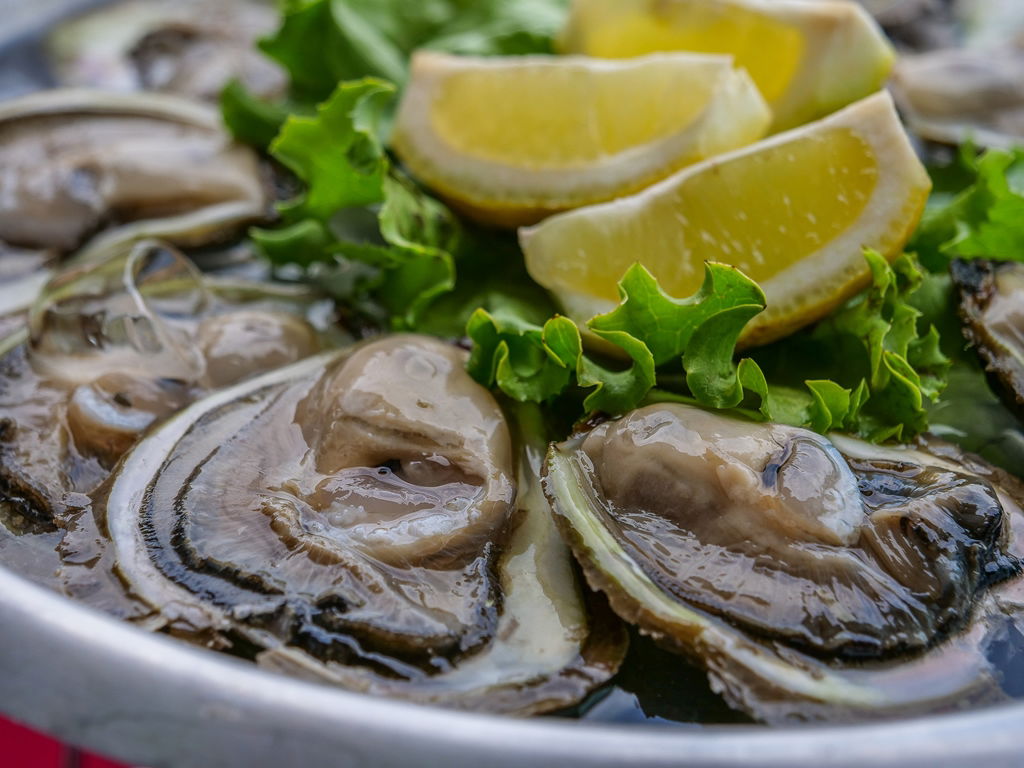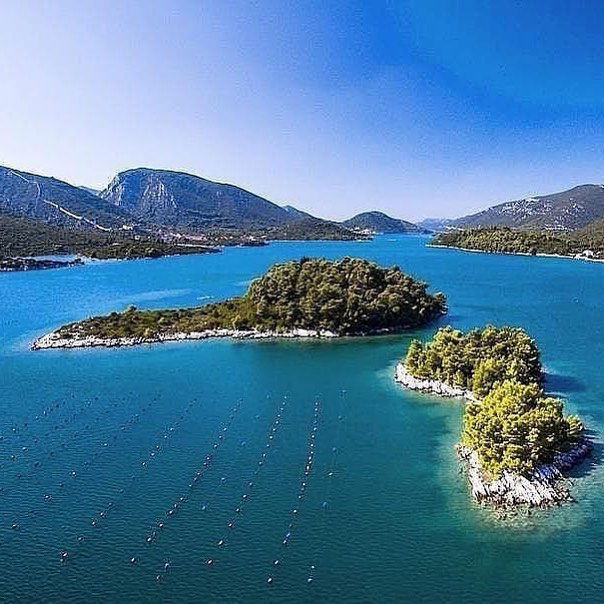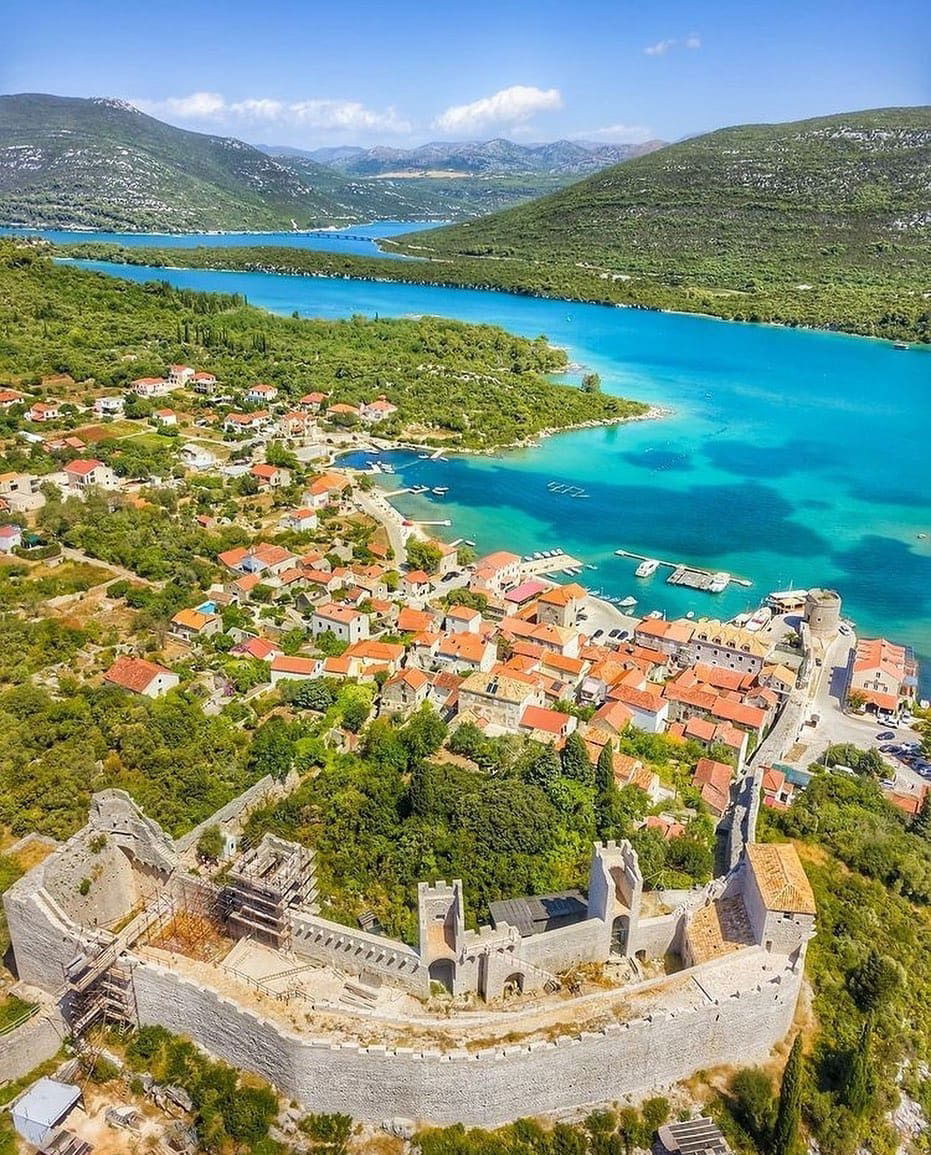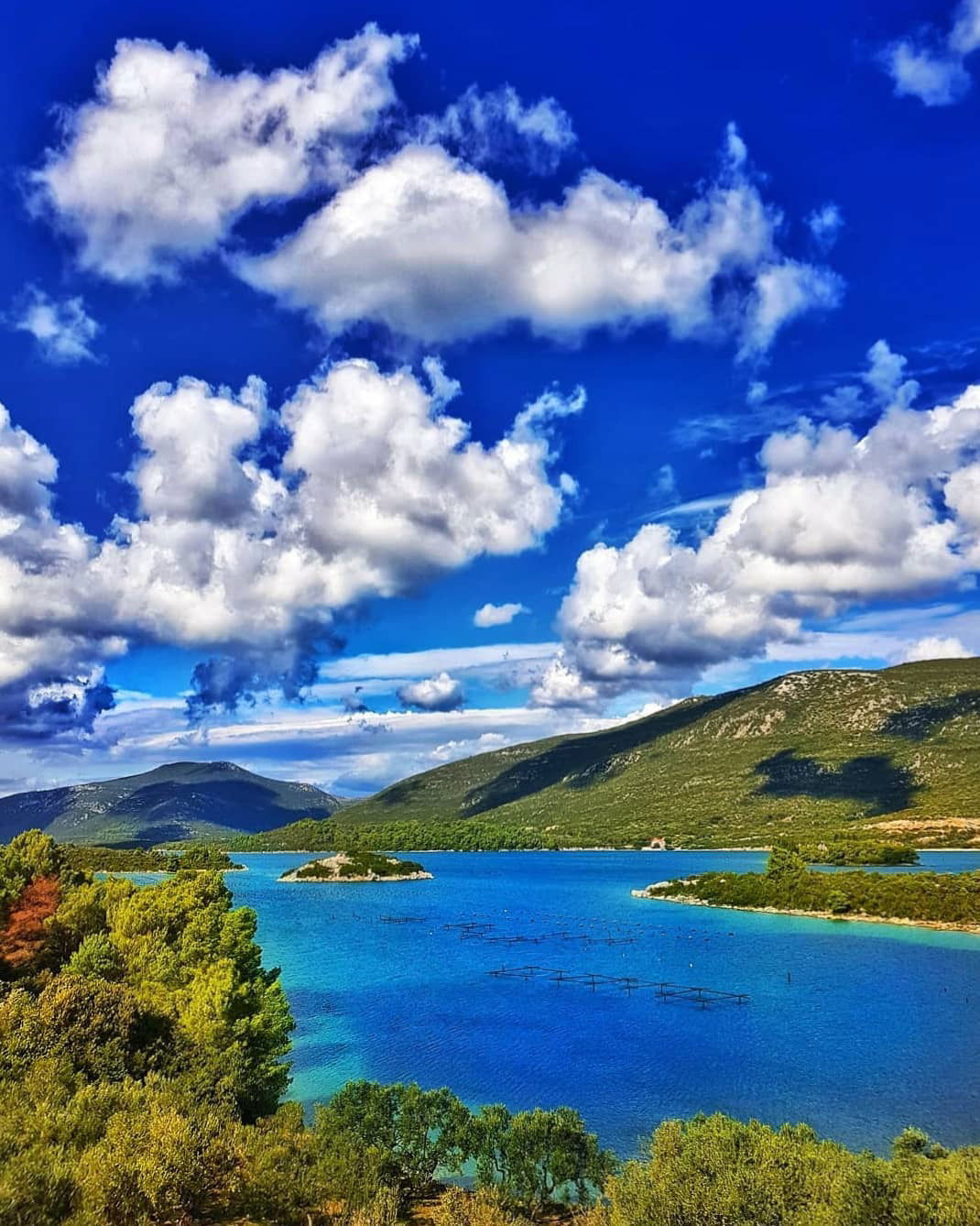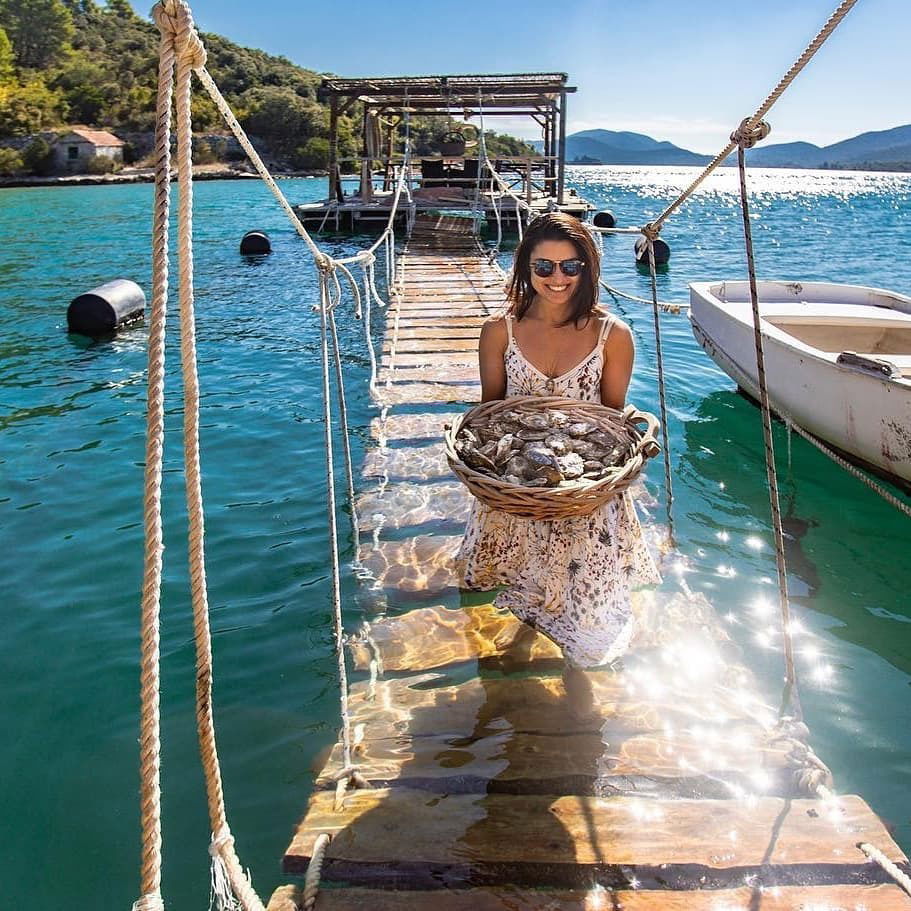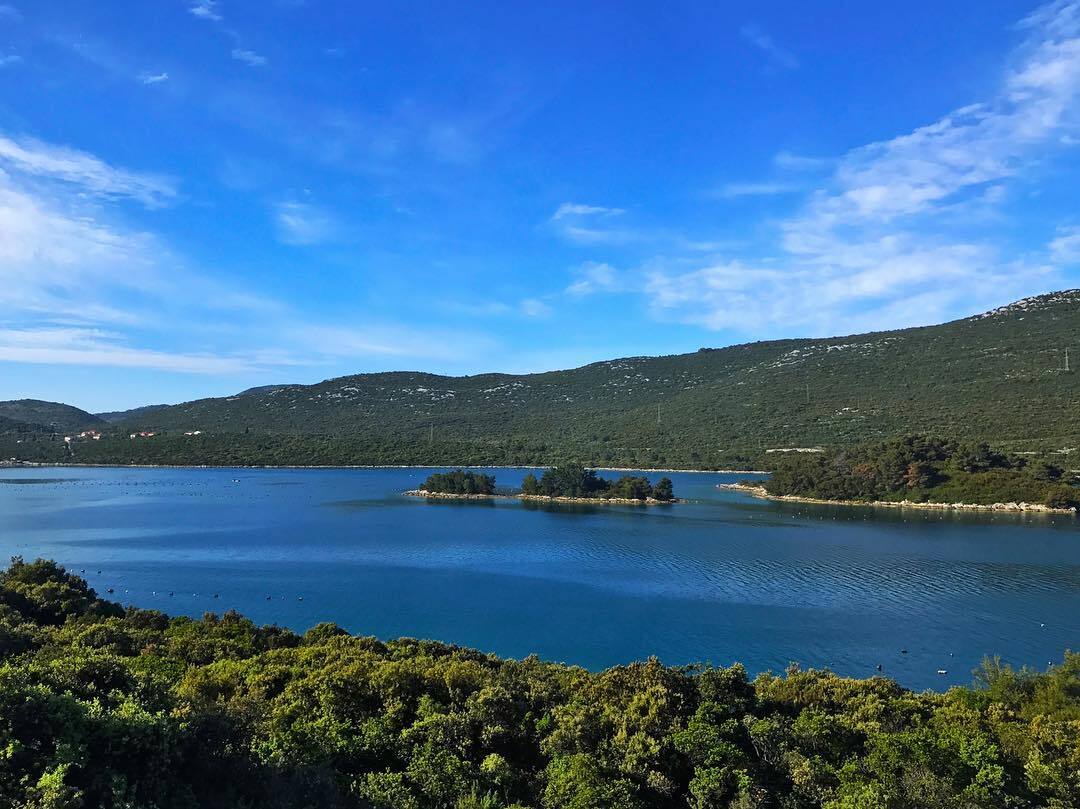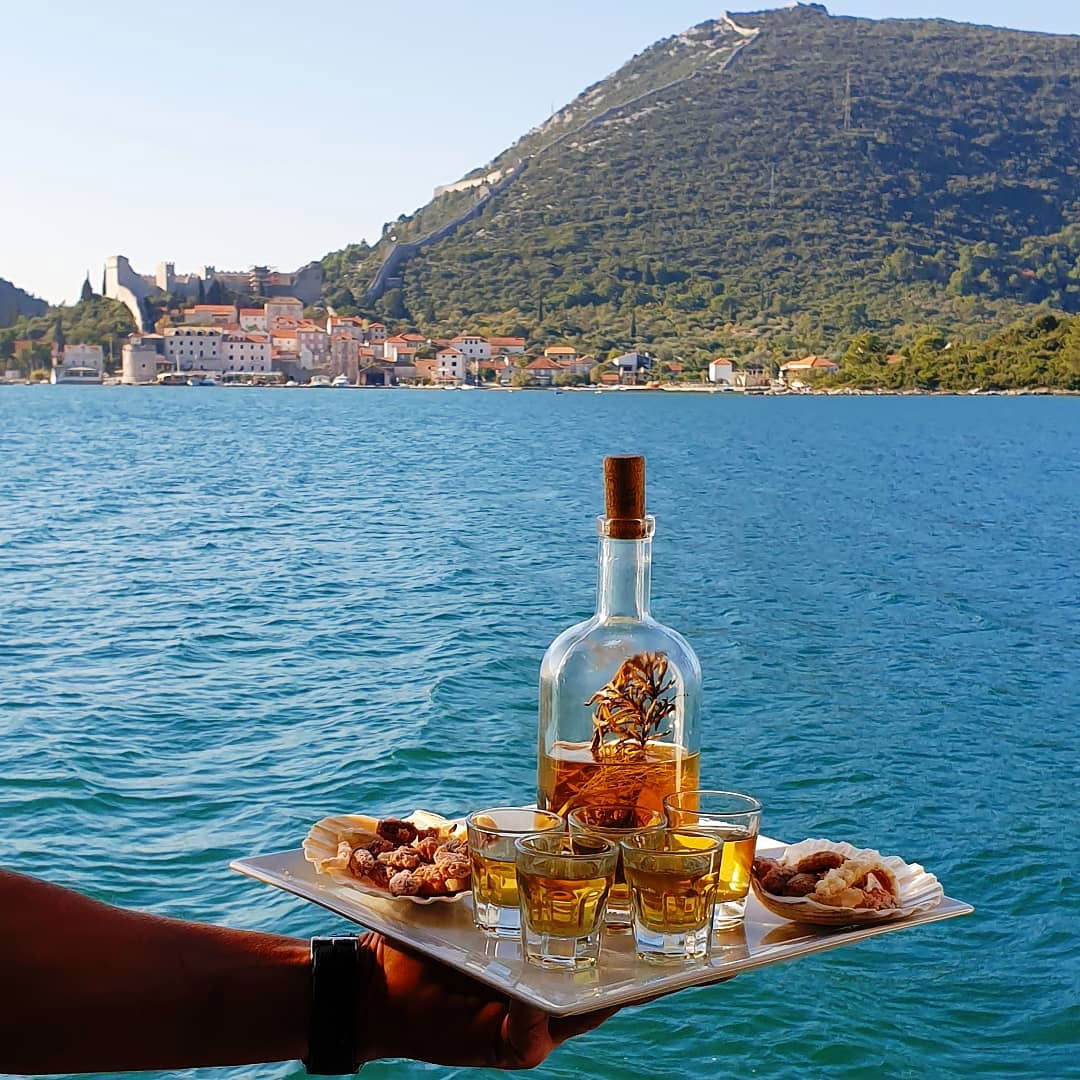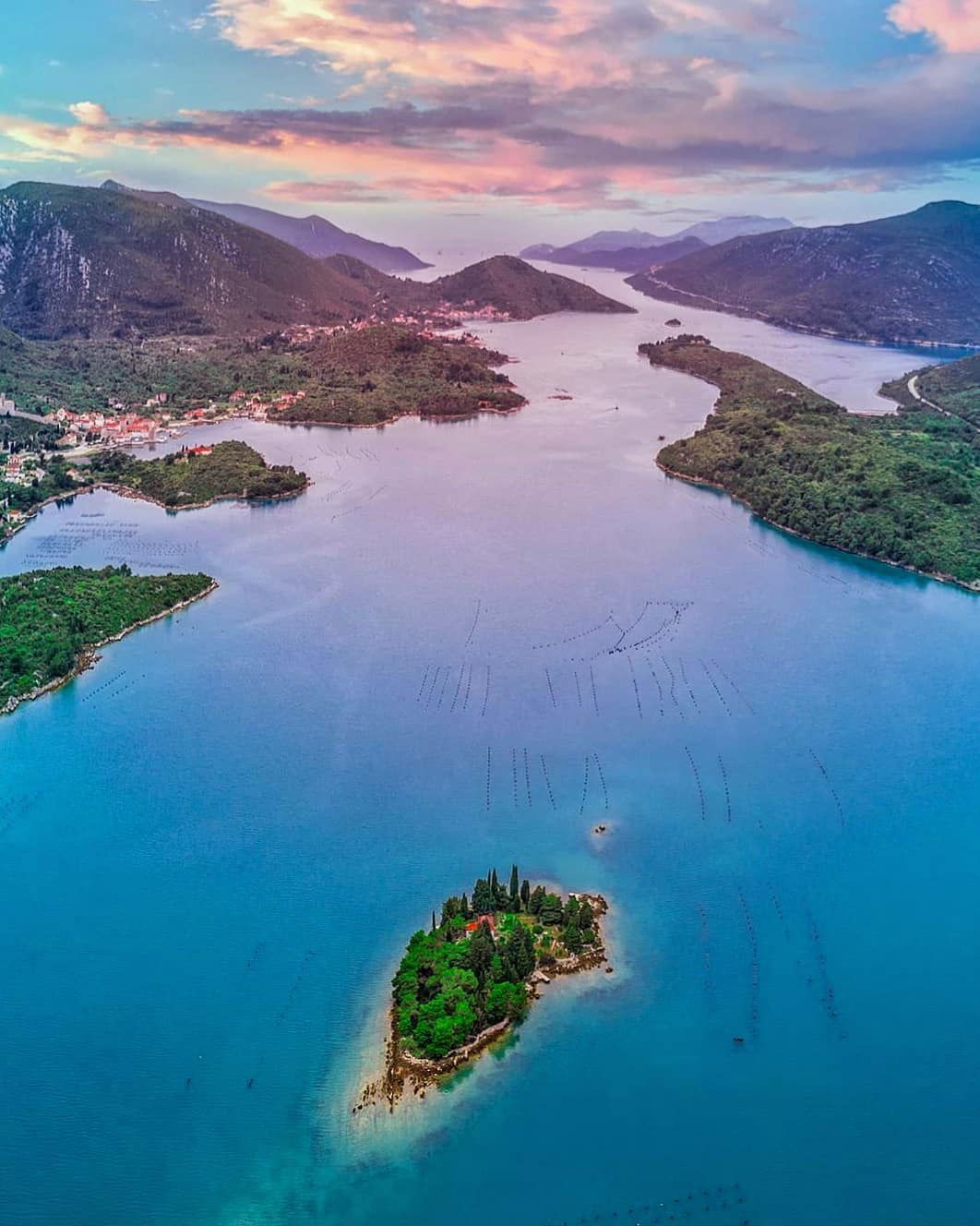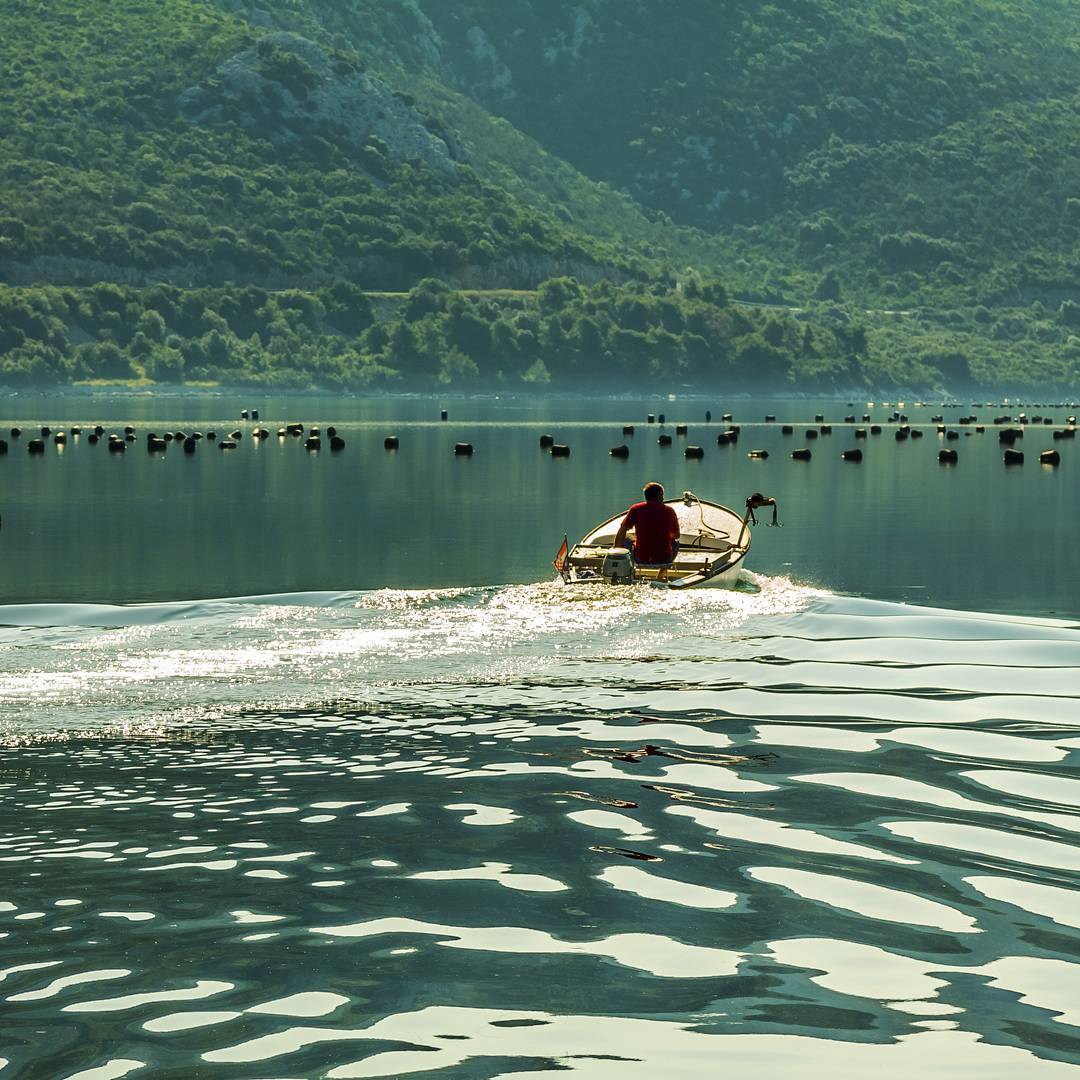about us
Currently, three very attractive and exclusive plots are FOR SALE:
1. "Maslina Bay (Zec)" in Ston Bay - 216,904 square meters - cadastral plot (k.č.) 1276/1 - cadastral municipality (k.o.) Zaton Doli - Beautiful beach with private access with a length of 140 meters - Ideal plot for the construction of a marina (port for nautical tourism). Possible construction of seven luxury villas each up to 400 square meters (0.098 Acre) and each up to 1000 square meters (0.247 Acre) of basement / underground unit (for wine cellar or similar). Building a hotel, tourist settlements, and campsites is also possible with an agreement with the municipality of Ston. Several stone houses built before 1968 are located on the plot and can be reconstructed.
2. "Veliki Školj" Island in Bay of Mali Ston - 21,677 square meters - cadastral plot 1571, cadastral municipality Zaton Doli - An island with complete privacy, ideal for a glamping resort or exclusive daily rentals for various events, etc. There is a small stone house built before 1968 on the island, as well as a fresh water source within a cave. Possible construction of a stone house with certain amount of planted olive trees or with a registered oyster farm.
3. "Bošak" Ston - 107,055 square meters - cadastral plot (k.č.) 2095, cadastral municipality (k.o.) Ston - The plot is entirely situated within the Ston walls, has its own separate entrance gate, and there is an old stone house from 1968, and a water well, both for reconstruction. Plot is also ideal for a cable car route, zip line, or other tourist attractions, as well as for the construction of a thematic and interactive park for tourists ("Walkthrough the history of the Dubrovnik Republic and Ston") with possibility of obtaining non-refundable funds from EU. There is a potential of building three luxury villas up to 400 square meters (0.098 Acre) each and each villa can have up to 1000 square meters (0.247 Acre) of basement / underground unit (for wine cellar or similar) alongside planted olive trees, grapes or another crop, with a registered family farm.
Contact: +385912266109
Email: info@land-croatia-peljesac.com
NAŠE parcele
UVALA MASLINA (ZEC): NA PRODAJU
Uvala Maslina (Zec) smještena u Stonskom zaljevu - Cijena: 18,34 EUR/m2 (3,97 milijuna EUR) - Veličina: 216 904 m2 (53,59 Hara) - K.č.: 1276/1 - KO: Zaton Doli - Plaža s privatnim pristupom (140 metara dužine)
Saznajte višeOTOK "VELIKI ŠKOLJ": NA PRODAJU
Otok "Veliki Školj" u Malostonskom zaljevu - Cijena: 150 EUR/m2 (3,25 milijuna EUR) - Veličina: 21 677 m2 (5,35 Hala) - K.č.: 1571 - KO: Zaton Doli - Prodaje se prekrasan privatni otok - Dubrovačka regija
Saznajte višeBOŠAK STON: NA PRODAJU
Bošak Ston - Velika parcela unutar gradskih zidina Stona - Cijena: 20 EUR/m2 (2,14 milijuna EUR) - Veličina: 107 055 m2 (26,45 Hara) - Katastarska čestica: 2095 - Katastarska općina: Ston - Tu je izgrađena stara kamena kuća prije 1968. za rekonstrukciju
Saznajte viševideo
Maslina Bay (Zec) - Island "Veliki Školj" - Bošak Ston
Pitanja
1. Koje su najvažnije stvari koje kupac nekretnine u Hrvatskoj mora znati?
- Pravni okvir za kupnju nekretnine u Hrvatskoj: Važno je upoznati se sa zakonskim zahtjevima i procedurama za kupnju nekretnine u Hrvatskoj, uključujući sve poreze, naknade i propise koji se mogu primjenjivati.
- Vlasništvo nad nekretninom: neophodno je provjeriti vlasništvo nad nekretninom i osigurati da na njoj nema nepodmirenih založnih prava, hipoteka ili drugih pravnih potraživanja.
- Lokacija nekretnine: Lokacija nekretnine je važna jer može utjecati na njezinu vrijednost, dostupnost i potencijal za prihod od najma ili preprodaje.
- Stanje nekretnine: Važno je temeljito pregledati nekretninu kako biste bili sigurni da je u dobrom stanju i da ispunjava vaša očekivanja.
- Agent za nekretnine: rad s uglednim i iskusnim agentom za nekretnine može biti od pomoći jer može pružiti vrijedne smjernice i podršku tijekom cijelog procesa kupnje.
- Jezična barijera: Ako ne govorite tečno hrvatski, važno je imati pouzdanog tumača ili prevoditelja koji će vam pomoći oko pravnih dokumenata i komunikacije s prodavateljem, agentom za nekretnine i ostalim stranama uključenim u transakciju.
- Mjenjačnica: ako kupujete nekretninu u Hrvatskoj sa stranom valutom, važno je uzeti u obzir tečaj i sve povezane naknade i naknade.
2. Koje troškove može imati kupac poljoprivrednog zemljišta u Hrvatskoj?
- Purchase price: The buyer will need to pay the agreed-upon purchase price for the agricultural land.
- Real estate agency commission: If the buyer is working with a real estate agency, they may need to pay a commission fee to the agency.
- Legal fees: The buyer will need to hire a lawyer to handle the legal aspects of the transaction, including reviewing contracts and conducting due diligence on the property. The legal fees can vary depending on the complexity of the transaction and the lawyer's hourly rate.
- Notary fees: The buyer will need to have the sale agreement notarized, and the notary will charge a fee for their services.
- Transfer tax: The buyer will need to pay a transfer tax when registering the ownership of the agricultural land with the land registry office. The transfer tax rate is currently set at 3% of the property value.
- Property survey: The buyer may wish to have a property survey conducted to ensure that the land they are purchasing is accurately represented in the sales contract. The cost of a survey can vary depending on the size and complexity of the property.
- Property improvement costs: If the agricultural land requires any improvements, such as clearing or fencing, the buyer will need to cover the cost of these improvements.
3. Koje su prednosti života na jadranskoj obali? Konkretno, koje su prednosti života na poluotoku Pelješcu u Hrvatskoj?
- Beautiful natural surroundings: The Adriatic coast is known for its stunning natural beauty, with crystal-clear waters, rocky cliffs, and pristine beaches. The Pelješac peninsula is no exception, with its rugged coastline and scenic countryside.
- Mild climate: The Adriatic coast enjoys a mild Mediterranean climate, with long, hot summers and mild winters. This makes it an ideal place to enjoy outdoor activities and water sports throughout the year.
- Fresh seafood: The Adriatic Sea is home to a diverse range of fish and seafood, which is a staple of the local cuisine. Residents of Pelješac can enjoy fresh fish and seafood dishes, as well as local wines, which are famous throughout Croatia.
- Rich cultural heritage: The Adriatic coast has a rich cultural heritage, with a mix of influences from ancient civilizations such as the Greeks, Romans, and Venetians, as well as more recent influences from the Ottoman Empire and Austro-Hungarian Empire. The Pelješac peninsula is home to many historic sites and monuments, including the medieval walls of Ston, the Franciscan monastery in Orebić, and the ruins of the ancient city of Narona.
- Relaxing lifestyle: Living on the Adriatic coast can offer a relaxed, laid-back lifestyle, with a focus on enjoying the simple pleasures of life, such as spending time with family and friends, enjoying good food and wine, and taking in the natural beauty of the surroundings.
4. Što turisti mogu raditi u Stonu na poluotoku Pelješcu i okolici?
- Visit the Walls of Ston: Ston is famous for its impressive medieval walls, which are the longest defensive walls in Europe, stretching for over 5 kilometers. Visitors can walk along the walls and enjoy the stunning views of the town and the surrounding countryside.
- Explore the salt pans: Ston is also known for its salt pans, which have been in use since Roman times. Visitors can learn about the history and production of salt, as well as enjoy a walk or bike ride along the salt pans.
- Go wine tasting: The Pelješac peninsula is known for its excellent wines, including the Plavac Mali red wine, which is produced from grapes grown in the region. Visitors can visit local wineries and enjoy tastings of the different wines on offer.
- Enjoy the beaches: The Pelješac peninsula has some beautiful beaches, with crystal-clear waters and stunning scenery. Some popular beaches in the area include Prapratno Beach and Trstenica Beach.
- Go hiking or cycling: The Pelješac peninsula offers some great hiking and cycling trails, with stunning views of the coastline and the surrounding countryside.
- Visit nearby towns: Ston is located near some other charming towns and villages, such as Orebić and Mali Ston, which are also worth exploring.
5. Koje su činjenice koje grad Ston čine jednim od najznačajnijih gradova na jadranskoj obali u Hrvatskoj iu tom dijelu Europe?
- The Walls of Ston: The town is famous for its impressive medieval walls, which are the longest defensive walls in Europe, stretching for over 5 kilometers. They were built in the 14th and 15th centuries and served to protect the town and its valuable salt pans.
- Salt pans: Ston has been known for salt production since Roman times, and salt pans are still active today. The town's salt was a valuable commodity in the past, and it played an essential role in the region's economic development.
- Oyster farming: The waters around Ston are rich in oysters, and the town has a long tradition of oyster farming. Today, Ston is a popular destination for seafood lovers who come to taste the local oysters.
- Historical significance: Ston has a rich history, and the town and its surroundings are dotted with historical landmarks, including the medieval Church of St. Michael, the Rector's Palace, and the Franciscan Monastery.
- Natural beauty: The Pelješac peninsula, where Ston is located, is known for its stunning natural beauty, with crystal-clear waters, beautiful beaches, and picturesque landscapes. The region is ideal for outdoor activities such as hiking, cycling, and water sports.
6. Koje su mogućnosti i moguće destinacije za dnevne izlete i ekskurzije za turiste koji borave u Stonu?
- Dubrovnik: Grad Dubrovnik, UNESCO-va svjetska baština, nalazi se otprilike sat vremena vožnje južno od Stona. Poznat kao "biser Jadrana", Dubrovnik je poznat po zadivljujućem starom gradu, srednjovjekovnim zidinama i bogatoj povijesti.
- Korčula: Otok Korčula nalazi se uz obalu Stona i dostupan je trajektom. Korčula je poznata po prekrasnim plažama, slikovitim selima i povijesnim znamenitostima, uključujući rodnu kuću Marka Pola.
- Nacionalni park Mljet: Nacionalni park Mljet nalazi se na otoku Mljetu, oko sat vremena vožnje sjeverno od Stona. U parku se nalaze dva slana jezera, benediktinski samostan i nekoliko pješačkih i biciklističkih staza.
- Vinska regija Pelješac: Poluotok Pelješac, na kojem se nalazi Ston, poznat je po proizvodnji vina. Turisti mogu posjetiti lokalne vinarije i kušati poznata regionalna vina Dingač i Postup.
- Obilazak otoka: Turisti mogu otići na izlet brodom kako bi posjetili obližnje otoke kao što su Šipan, Lopud i Koločep, poznati po prekrasnim plažama i prekrasnim krajolicima.
7. Koje su najbolje i najisplativije poljoprivredne kulture za uzgoj na području Pelješca?
- Grožđe: Regija je poznata po visokokvalitetnim crnim vinima, posebice sortama Dingač i Postup, koja se proizvode od grožđa uzgojenog na strmim padinama poluotoka.
- Masline: Pelješac je poznat i po visokokvalitetnom maslinovom ulju, proizvedenom od maslina uzgojenih na poluotoku. Blaga klima i plodno tlo regije čine je idealnom lokacijom za uzgoj maslina.
- Smokve: Smokve su još jedna popularna kultura u tom području, a mnogi poljoprivrednici proizvode svježe i suhe smokve za izvoz.
- Bademi: Stabla badema uspijevaju u toploj, suhoj klimi Pelješca, a orašasti plodovi su unosna kultura za mnoge poljoprivrednike u regiji.
- Lavanda: Poluotok Pelješac također je odlično mjesto za uzgoj lavande koja se koristi za proizvodnju eteričnih ulja, kozmetičkih i drugih proizvoda.
8. Zbog čega je malostonska kamenica tako cijenjena u cijelom svijetu?
Kamenice se hrane raznim planktonima i drugim mikroorganizmima koji rastu u zaljevu, što im daje poseban okus koji se često opisuje kao slani i blago slatki. Kamenice su također cijenjene zbog svoje čvrste, mesnate teksture i često se poslužuju sirove u poluljusci, iako se također mogu kuhati na razne načine.
Osim izvrsnog okusa i teksture, malostonske kamenice cijenjene su i zbog svoje nutritivne vrijednosti. Bogat su izvor proteina, vitamina i minerala, a imaju malo masti i kalorija. Kao rezultat toga, oni su popularan izbor među potrošačima koji su svjesni zdravlja i traže hranjivu i aromatičnu opciju plodova mora.
Sve u svemu, jedinstvena kombinacija čimbenika okoliša i načina uzgoja u Malostonskom zaljevu čini malostonsku kamenicu uistinu iznimnim proizvodom koji visoko cijene ljubitelji morskih plodova diljem svijeta.
9. Možemo li kontaktirati direktno prodavatelje ovih parcela, bez angažiranja agencije za nekretnine?
10. Pod kojim okolnostima je dopuštena gradnja kuće do 400 metara kvadratnih (m2) na Općini Ston u Hrvatskoj, čak i ako zemljište nije građevinsko?
According to the zoning plan of the Municipality of Ston, construction on agricultural land is allowed if it is related to the agricultural production process and if the residential building is intended for the owner of the agricultural land or their immediate family members. Additionally, the construction must not harm the surrounding environment, including the quality of air, water, and soil, and must be compatible with the existing landscape.
In order to obtain a building permit for construction on agricultural land in the Municipality of Ston, an application must be submitted to the local authorities, along with a set of documents, including a site plan, a detailed description of the proposed construction, and an environmental impact assessment. The application must be reviewed and approved by the competent authorities before a building permit is issued.
It's important to note that the rules and regulations regarding construction on agricultural land in the Municipality of Ston can be complex and may vary depending on the specific location and circumstances. It is recommended to seek professional advice and guidance from local authorities and experts before beginning any construction activities on agricultural land in the area.
11. Koje korake trebam poduzeti kako bih dobio građevinsku dozvolu za građenje na poljoprivrednom zemljištu u Općini Ston?
- Angažirajte ovlaštenog arhitekta ili građevinskog inženjera za izradu detaljnog plana za vaš građevinski projekt, uključujući nacrte i tehničku dokumentaciju.
- Svoje planove i dokumentaciju dostavite nadležnim tijelima, uključujući Odjel za urbanizam i zaštitu okoliša Općine Ston.
- Pričekajte da vlasti pregledaju vaše planove i donesu odluku o tome hoće li odobriti ili odbiti vaš zahtjev za građevinsku dozvolu.
- Ako je vaš zahtjev odobren, morat ćete platiti sve povezane pristojbe i dobiti sva potrebna odobrenja od drugih nadležnih tijela, kao što su vatrogasci i komunalno poduzeće.
- Nakon dobivanja svih odobrenja i naknada, možete započeti s izgradnjom vašeg projekta.
kontakt
- Ston, Hrvatska
Kontaktirajte nas kako bismo dogovorili razgledavanje nekretnina koje vas zanimaju ili ako imate bilo kakvih drugih pitanja vezanih uz kupnju naših parcela na Pelješcu kod Stona ili ako ste zainteresirani za poslovnu suradnju.


